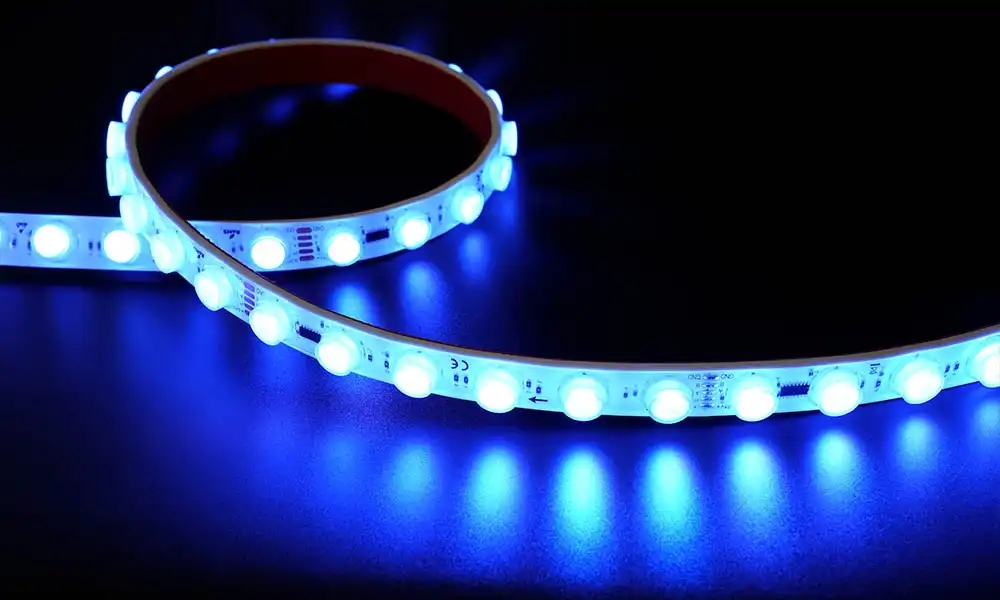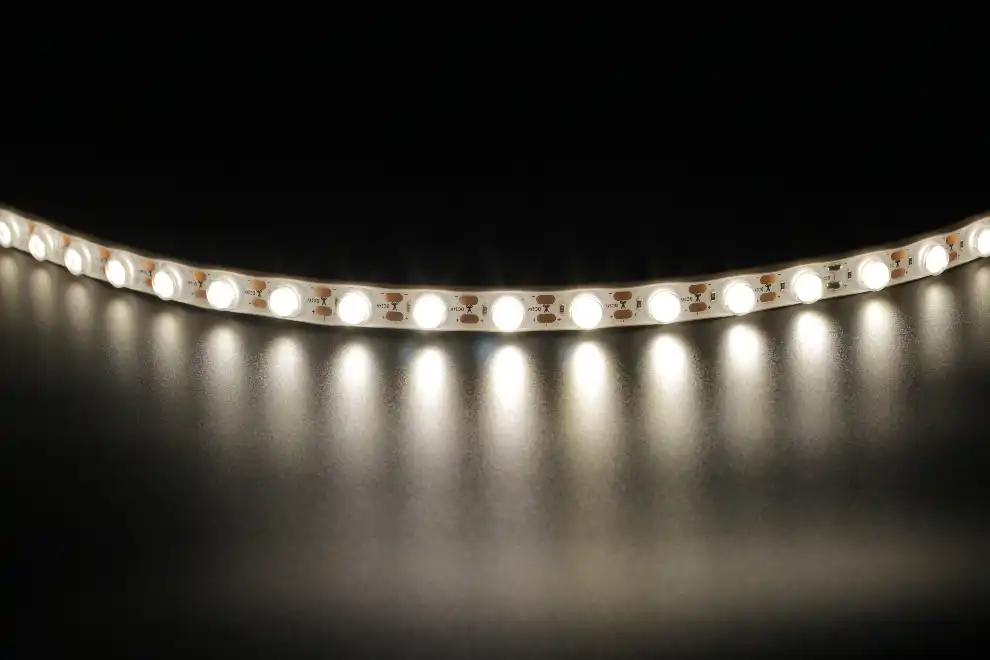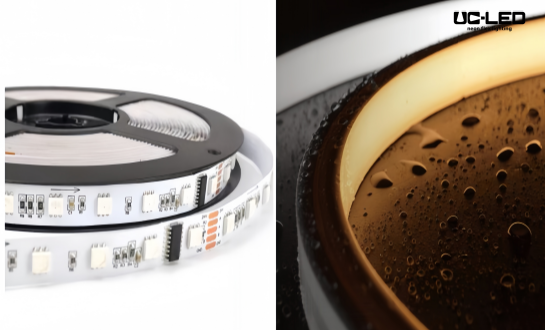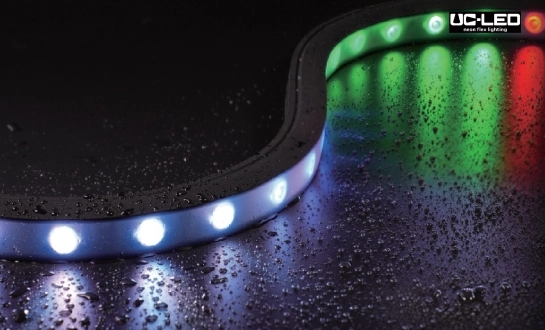Introducing LED Strip Voltage Options
LED strip lighting has revolutionized the way we illuminate spaces, offering versatility and energy efficiency. At the heart of this technology lies a critical decision: choosing the right voltage. The two primary options for LED strips are 12V and 24V systems, each with its own set of advantages and considerations.
12V LED Strip Systems
12V LED strips are the most common choice for residential and small-scale commercial applications. They offer several benefits:
- Wider availability of compatible power supplies and controllers
- Lower cost for shorter runs
- Ideal for DIY projects and hobbyists
- Safer for home use due to lower voltage
However, 12V systems have limitations, particularly when it comes to longer installations. As the strip length increases, voltage drop becomes more pronounced, potentially leading to dimming at the far end of the strip.
24V LED Strip Systems
24V LED strips are gaining popularity, especially in commercial and industrial settings. They offer distinct advantages:
- More efficient for longer runs, with less voltage drop
- Brighter output potential
- Reduced current draw, allowing for thinner wires
- Better heat dissipation, potentially extending lifespan
The main drawback of 24V systems is the higher initial cost and the need for specialized power supplies and controllers.
Factors Influencing Voltage Selection
When choosing between 12V and 24V LED strips, several factors come into play:
Installation Length
For short runs of under five meters, 12V LED strips usually work well, providing consistent brightness over the limited distance. However, when the project requires longer installations, 24V strips are a better choice, as they minimize voltage drop and ensure even illumination from start to finish, avoiding dark or uneven sections along the strip.
Power Requirements
When working with higher wattage LED strips, especially high-density or ultra-bright models, 24V systems are generally more efficient. They distribute power more evenly and reduce stress on wiring, making them ideal for demanding applications. While 12V strips may still be sufficient in lower-power scenarios, 24V offers a more reliable option for performance-heavy lighting setups.
Existing Infrastructure
If you’re upgrading or retrofitting an existing low-voltage lighting system, 12V LED strips can often be the more practical solution. They allow you to reuse existing transformers, wiring, and compatible accessories, which helps lower costs. Sticking with 12V in such cases avoids unnecessary modifications, making the transition smoother and more budget-friendly without compromising overall lighting quality.
Dimming Capabilities
Dimming systems often have compatibility restrictions, with some designed specifically for either 12V or 24V strips. Choosing the right voltage ensures smooth dimming performance and avoids flickering or uneven brightness. Before purchasing controls, always confirm compatibility with your chosen strip type, as correct pairing ensures seamless integration, better energy efficiency, and precise lighting adjustment for your specific needs.

Optimizing Performance and Safety
Regardless of the voltage you choose, certain practices can help optimize the performance and safety of your LED strip installation:
Proper Power Supply Selection
Choose a power supply that matches your LED strip's voltage and provides sufficient wattage. It's recommended to use a power supply rated at least 20% higher than your LED strip's total wattage to ensure stability and longevity.
Voltage Drop Considerations
For longer runs, consider using thicker gauge wires or implementing a parallel wiring configuration to minimize voltage drop. This is especially important for 12V systems.
Heat Management
Proper heat dissipation is crucial for LED longevity. Use aluminum channels or heat sinks for high-power installations, particularly with 24V systems that may generate more heat.
Quality Components
Invest in high-quality LED strips and accessories from reputable manufacturers. This ensures better performance, longer lifespan, and improved safety.
Choosing the right voltage for your LED strip lighting project is a balancing act between performance, cost, and practicality. By carefully considering your specific needs and the factors outlined above, you can make an informed decision that results in a stunning and efficient lighting solution.
Conclusion
Selecting the appropriate voltage for your LED strips lighting is a crucial step in creating an efficient and effective illumination system. Whether you opt for 12V or 24V, understanding the implications of your choice will lead to better performance and longevity of your installation. For those seeking high-quality LED strip solutions, partnering with a reputable LED strip supplier or manufacturer can make all the difference. These experts can provide valuable guidance on voltage selection and offer products tailored to your specific needs.
FAQ
Can I mix 12V and 24V LED strips in the same installation?
It's not recommended to mix voltages in a single system. Each voltage requires its own power supply and controller.
Are 24V LED strips brighter than 12V strips?
Not necessarily. Brightness depends on the LED chip and density, not just voltage. However, 24V systems can maintain brightness over longer distances more effectively.
How do I calculate the power supply needed for my LED strip?
Multiply the wattage per meter by the total length of your strip, then add 20% for safety margin. Choose a power supply that meets or exceeds this wattage.
Expert LED Strip Solutions | QUAN HE
QUAN HE Lighting Co., Ltd. is your trusted partner for premium LED strip lighting solutions. With over a decade of experience, our ISO-certified manufacturing facility produces high-quality, customizable LED products. Our expert R&D team ensures innovative designs while our comprehensive OEM and ODM services cater to your specific needs. For reliable, efficient, and cutting-edge LED strip lighting, choose QUAN HE as your go-to manufacturer and supplier. Contact us at Linda@uc-led.com to illuminate your projects with precision and excellence.
source: LED Light

References
1. Johnson, M. (2022). "LED Strip Lighting: A Comprehensive Guide to Voltage Selection." Illumination Engineering Society Journal, 45(3), 78-92.
2. Smith, A. R., & Brown, T. L. (2021). "Comparative Analysis of 12V and 24V LED Strip Systems in Commercial Applications." Journal of Energy-Efficient Lighting, 18(2), 205-220.
3. Lee, S. H., et al. (2023). "Optimizing Power Distribution in LED Strip Installations: Voltage Considerations and Best Practices." IEEE Transactions on Industry Applications, 59(4), 3652-3665.
4. Williams, P. K. (2020). "Thermal Management Strategies for High-Power LED Strip Lighting." Advanced Materials for Optoelectronics, 7(1), 45-58.
5. Chen, Y., & Davis, R. (2022). "Energy Efficiency and Color Rendering: A Voltage-Based Study of LED Strip Lighting." Lighting Research & Technology, 54(6), 789-803.







